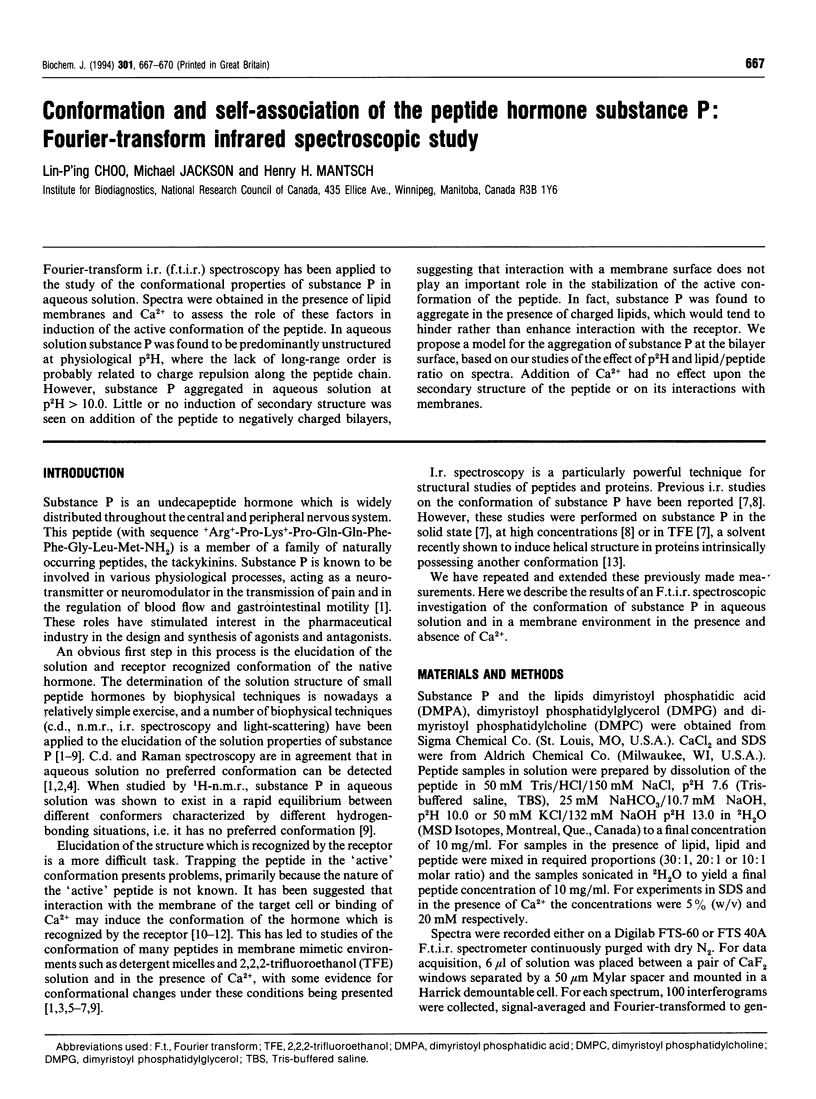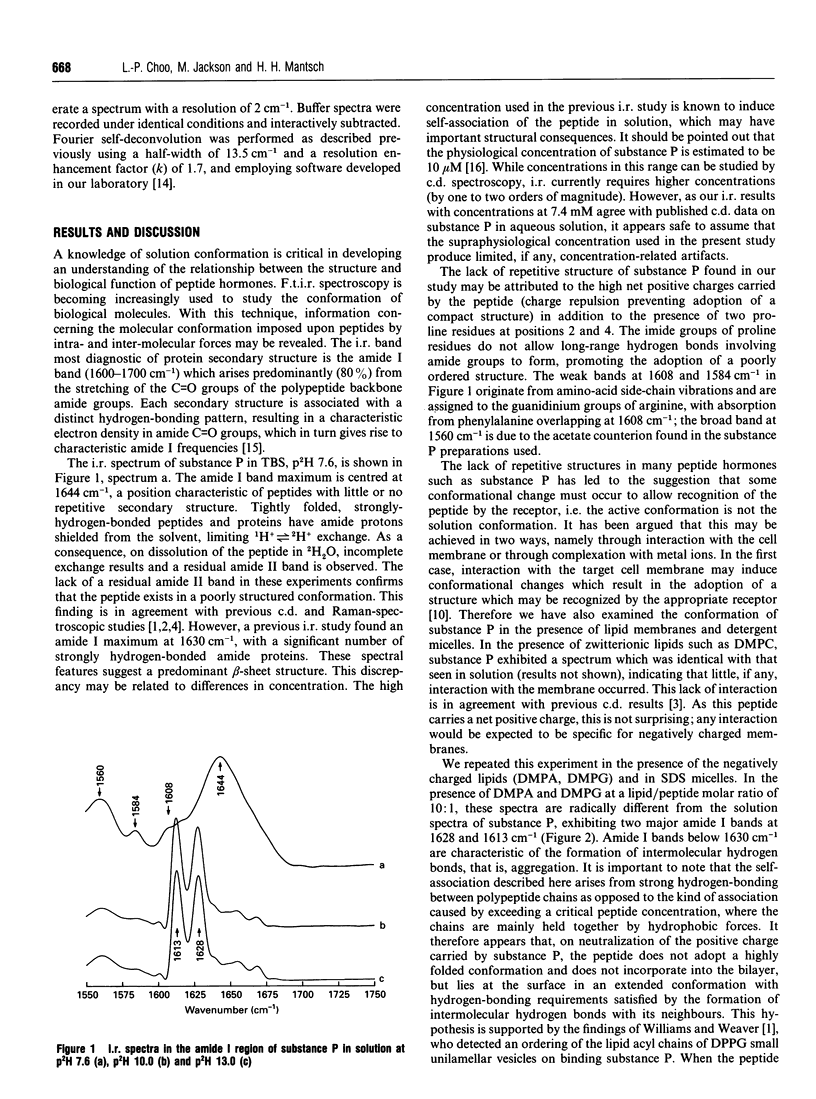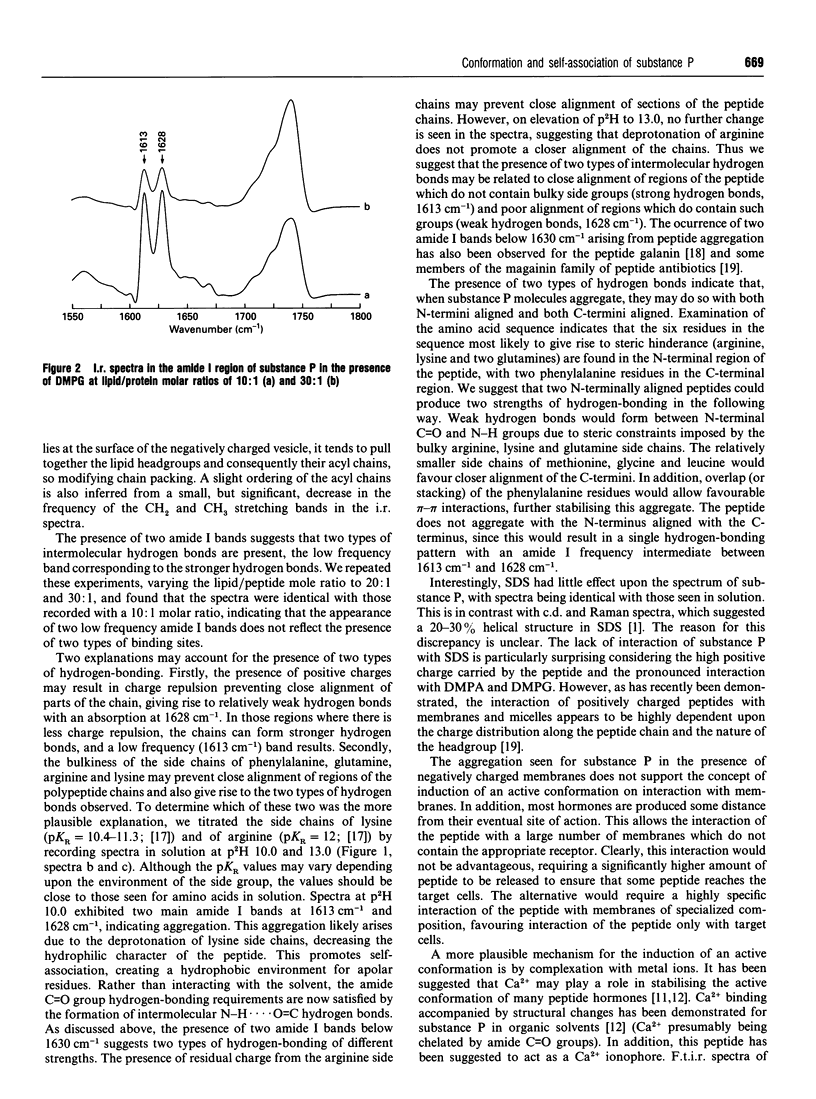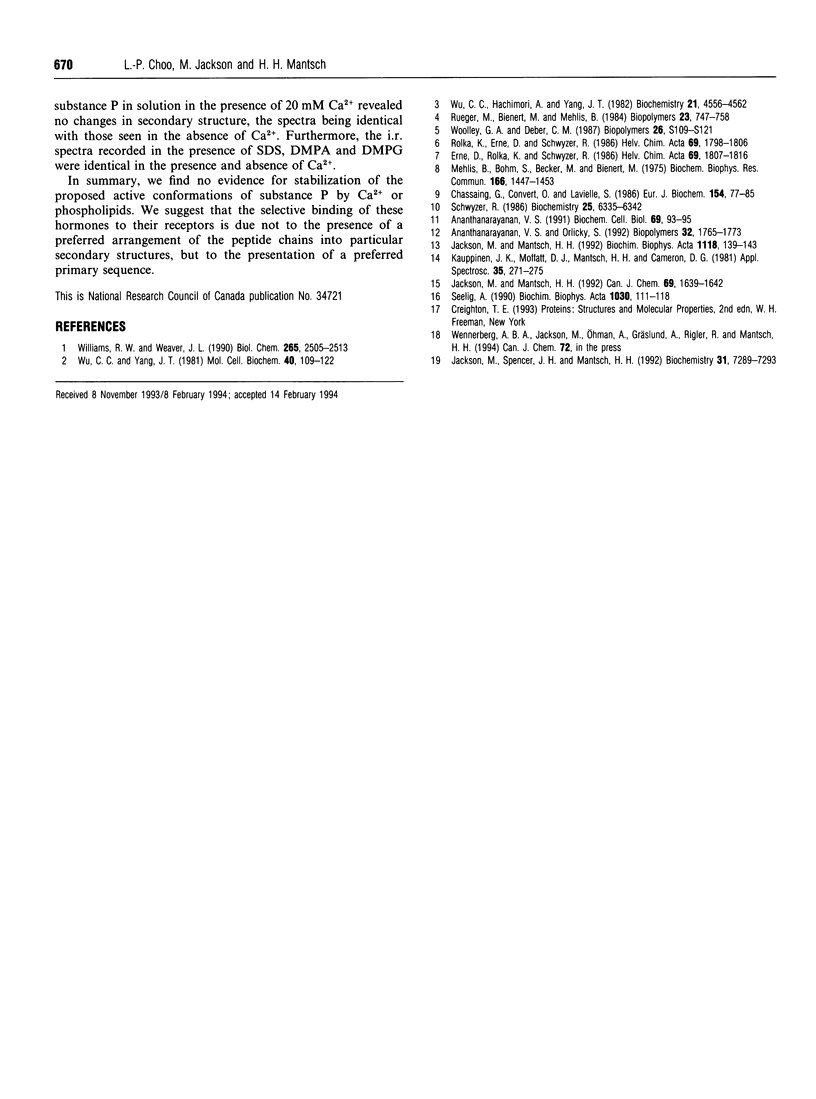Abstract
Fourier-transform i.r. (f.t.i.r.) spectroscopy has been applied to the study of the conformational properties of substance P in aqueous solution. Spectra were obtained in the presence of lipid membranes and Ca2+ to assess the role of these factors in induction of the active conformation of the peptide. In aqueous solution substance P was found to be predominantly unstructured at physiological p2H, where the lack of long-range order is probably related to charge repulsion along the peptide chain. However, substance P aggregated in aqueous solution at p2H > 10.0. Little or no induction of secondary structure was seen on addition of the peptide to negatively charged bilayers, suggesting that interaction with a membrane surface does not play an important role in the stabilization of the active conformation of the peptide. In fact, substance P was found to aggregate in the presence of charged lipids, which would tend to hinder rather than enhance interaction with the receptor. We propose a model for the aggregation of substance P at the bilayer surface, based on our studies of the effect of p2H and lipid/peptide ratio on spectra. Addition of Ca2+ had no effect upon the secondary structure of the peptide or on its interactions with membranes.
Full text
PDF



Selected References
These references are in PubMed. This may not be the complete list of references from this article.
- Ananthanarayanan V. S., Orlicky S. Interaction of substance P and its N- and C-terminal fragments with Ca2+: implications for hormone action. Biopolymers. 1992 Dec;32(12):1765–1773. doi: 10.1002/bip.360321217. [DOI] [PubMed] [Google Scholar]
- Ananthanarayanan V. S. Peptide hormones, neurotransmitters, and drugs as Ca2+ ionophores: implications for signal transduction. Biochem Cell Biol. 1991 Feb-Mar;69(2-3):93–95. doi: 10.1139/o91-014. [DOI] [PubMed] [Google Scholar]
- Chassaing G., Convert O., Lavielle S. Preferential conformation of substance P in solution. Eur J Biochem. 1986 Jan 2;154(1):77–85. doi: 10.1111/j.1432-1033.1986.tb09361.x. [DOI] [PubMed] [Google Scholar]
- Jackson M., Mantsch H. H. Halogenated alcohols as solvents for proteins: FTIR spectroscopic studies. Biochim Biophys Acta. 1992 Jan 9;1118(2):139–143. doi: 10.1016/0167-4838(92)90141-y. [DOI] [PubMed] [Google Scholar]
- Jackson M., Mantsch H. H., Spencer J. H. Conformation of magainin-2 and related peptides in aqueous solution and membrane environments probed by Fourier transform infrared spectroscopy. Biochemistry. 1992 Aug 18;31(32):7289–7293. doi: 10.1021/bi00147a012. [DOI] [PubMed] [Google Scholar]
- Mehlis B., Bohm S., Becker M., Bienert M. Circular dichroism and infrared studies of substance P and C-terminal analogs. Biochem Biophys Res Commun. 1975 Oct 27;66(4):1447–1453. doi: 10.1016/0006-291x(75)90521-5. [DOI] [PubMed] [Google Scholar]
- Rueger M., Bienert M., Mehlis B., Gast K., Zirwer D., Behlke J. Self-association of the neuroregulatory peptide substance P and Its C-terminal sequences. Biopolymers. 1984 Apr;23(4):747–758. doi: 10.1002/bip.360230413. [DOI] [PubMed] [Google Scholar]
- Schwyzer R. Molecular mechanism of opioid receptor selection. Biochemistry. 1986 Oct 7;25(20):6335–6342. doi: 10.1021/bi00368a075. [DOI] [PubMed] [Google Scholar]
- Seelig A. Substance P and antagonists. Surface activity and molecular shapes. Biochim Biophys Acta. 1990 Nov 30;1030(1):111–118. doi: 10.1016/0005-2736(90)90245-j. [DOI] [PubMed] [Google Scholar]
- Williams R. W., Weaver J. L. Secondary structure of substance P bound to liposomes in organic solvents and in solution from Raman and CD spectroscopy. J Biol Chem. 1990 Feb 15;265(5):2505–2513. [PubMed] [Google Scholar]
- Woolley G. A., Deber C. M. Peptides in membranes: lipid-induced secondary structure of substance P. Biopolymers. 1987;26 (Suppl):S109–S121. doi: 10.1002/bip.360260012. [DOI] [PubMed] [Google Scholar]
- Wu C. S., Hachimori A., Yang J. T. Lipid-induced ordered conformation of some peptide hormones and bioactive oligopeptides: predominance of helix over beta form. Biochemistry. 1982 Sep 14;21(19):4556–4562. doi: 10.1021/bi00262a007. [DOI] [PubMed] [Google Scholar]
- Wu C. S., Yang J. T. Sequence-dependent conformations of short polypeptides in a hydrophobic environment. Mol Cell Biochem. 1981 Oct 30;40(2):109–122. doi: 10.1007/BF00224754. [DOI] [PubMed] [Google Scholar]


